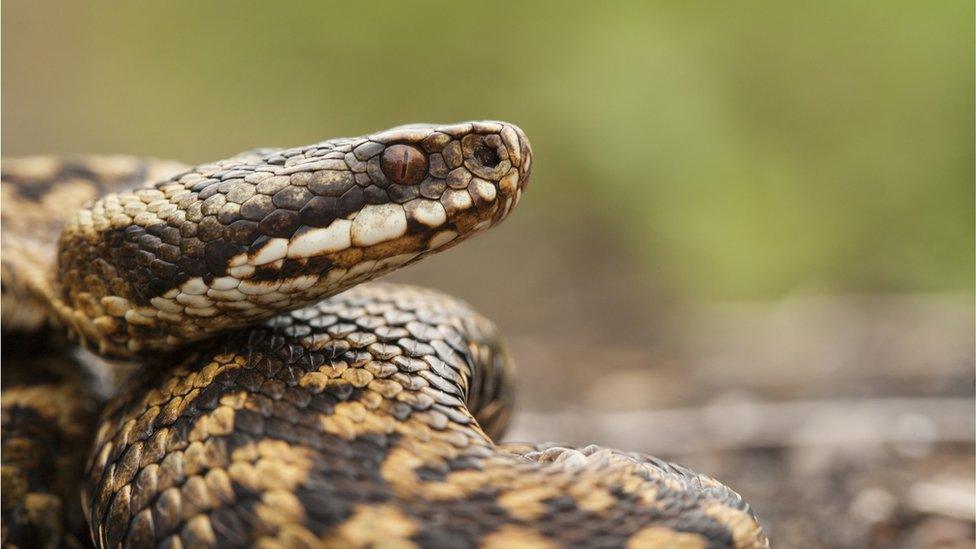Adder extinction fear over 'image problem' in the UK
- Published
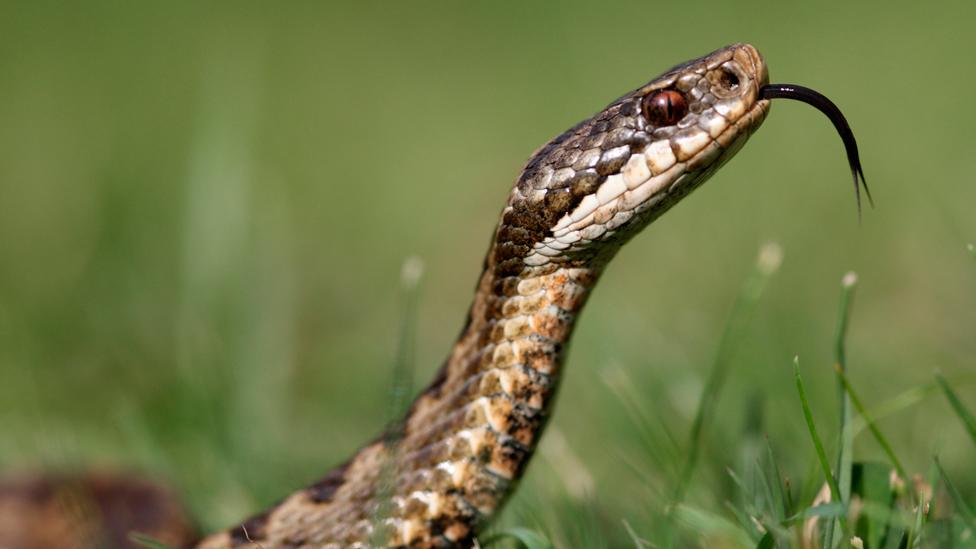
Adders are a protected species in the UK
Adders have an image problem that could result in the iconic species going extinct, experts have warned.
The Amphibian and Reptile Groups of the UK (ARG UK) said a "whole generation's attitude" towards the venomous snake had to change.
It has been working with 500 Pembrokeshire school pupils to put on a parade, which will see a giant adder sculpture slither through St Davids.
Wales is seen as one of the reptile's remaining strongholds.
Naturalist Iolo Williams said the creature is often misunderstood
The project's coordinator, Dr Sam Langdon, told BBC Wales adders were disappearing across the UK, leaving "little pockets" where the creatures can be spotted.
She said persecution - alongside loss of habitat - was a key reason behind the snake's decline.
"They've had a negative press for so long. People still go out and kill them, seeing them as a danger and something to be feared," she said.
"Obviously we can do survey work and try and protect them, but my strong feeling is that if we don't change how people feel about them, show they're not dangerous and are something to look after then we will lose them."
The St Davids peninsula - part of the Pembrokeshire National Park - is a particular haven for adders with plenty of heath land, hedge banks and cliff areas which are not intensively grazed or threatened by development.
Dr Langdon said the species had now become restricted to these sorts of environments.
Though there is a lack of data available about population numbers she said the feeling on the ground amongst experts was that the snakes were vanishing.
They are already believed to be extinct in Nottinghamshire and Warwickshire, and on the verge of disappearing from Oxfordshire, Buckinghamshire, Hertfordshire and Greater London.
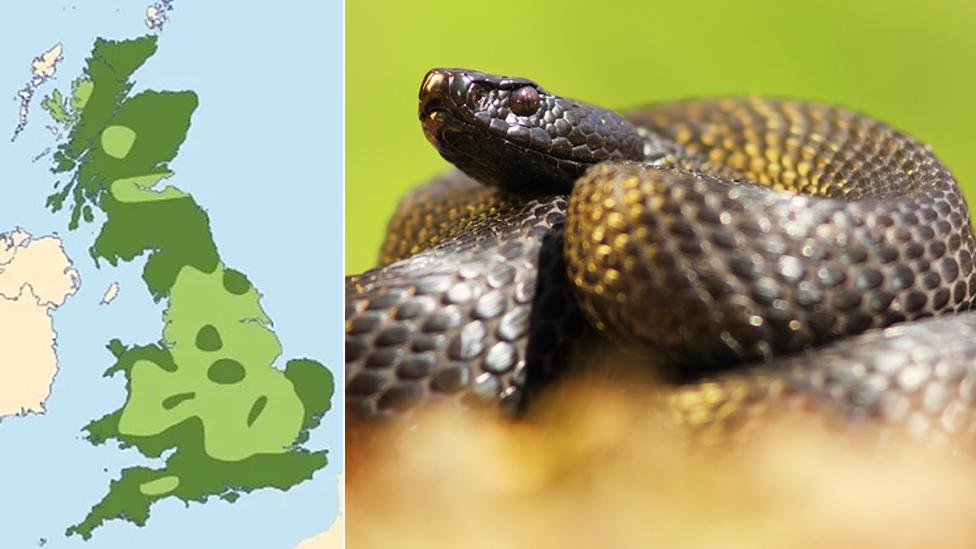
The darker areas of the map show where adders have been recorded most recently
ADDER FACTFILE:
Adders have a dark, continuous zig-zag stripe along their backs
They live between five to 10 years and can grow to around 60cm in length
It is the UK's only venomous snake but there have been no human fatalities in more than 40 years
Adders feed largely on small rodents and lizards.
They hibernate for four months from around October.
They are a protected species.

The charity has been holding workshops with every school in Pembrokeshire, with the aim of changing attitudes amongst the younger generation.
Children have been designing a giant adder lantern, which was unveiled by naturalist and TV presenter Iolo Williams.
"Ignorance is a massive issue - we should look on the adder as an important part of our ecology," he said.
"Adders aren't going to gang up on you, attack you - they'll avoid you whenever they possibly could. If a big giant stood on me, I'd bite him - that's the only time they will, to defend themselves. We need to change the image and see it as what it is - a beautiful animal."
3 types of snake are native to the UK
Hundreds took part in a parade at St Davids airfield and Mr Williams believes educating the next generation will play a part in the creature's future.
The project, funded by Welsh Government and the Pembrokeshire Coast National Park Authority, has already seen signs and an adder trail put up in sand dunes at Poppit beach, which is popular with tourists.
The signs advise that if you spot an adder you should: "Stop, step back - and smile!"
- Published29 July 2018
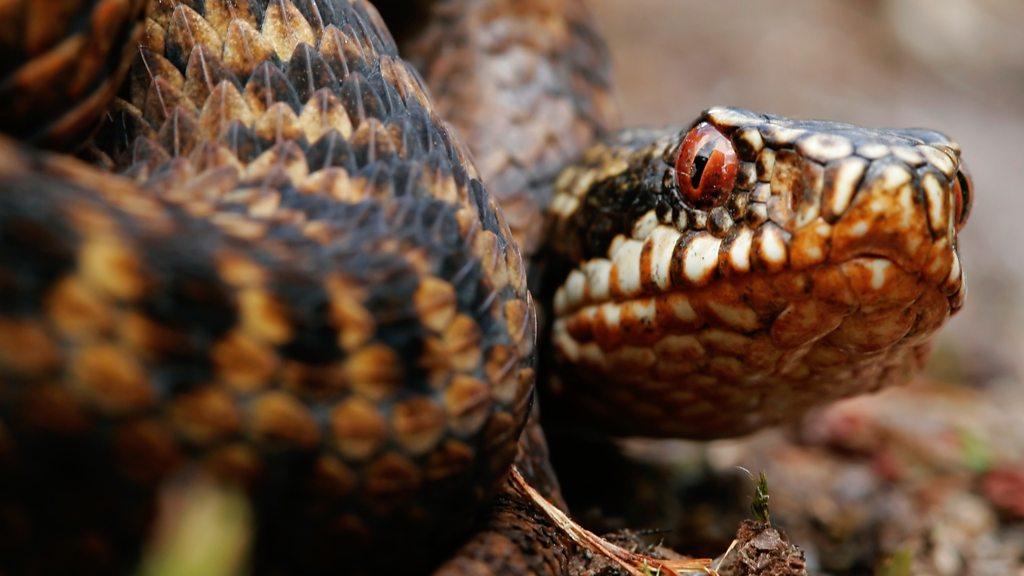
- Published23 October 2018

- Published13 April 2018
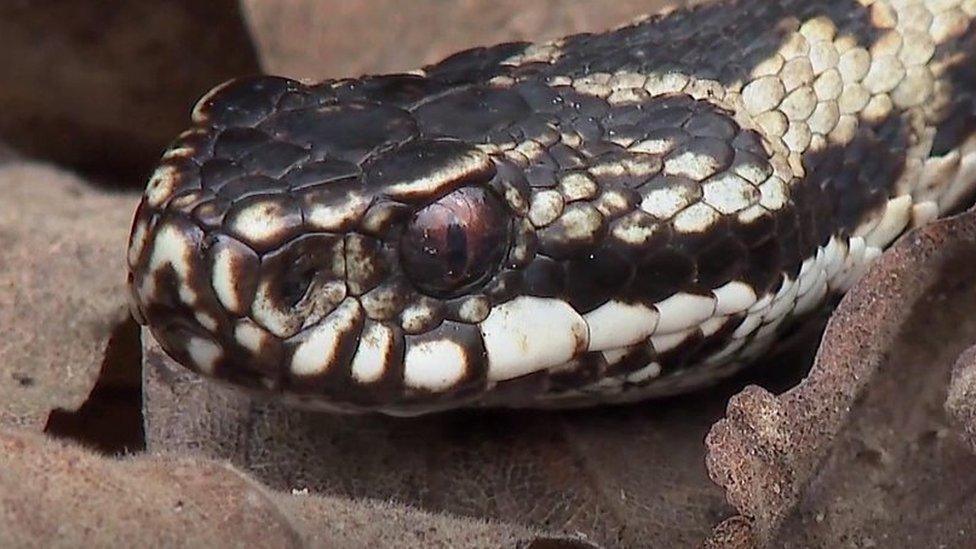
- Published3 June 2016
